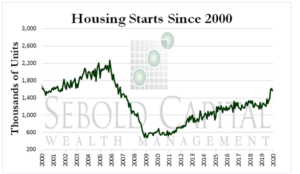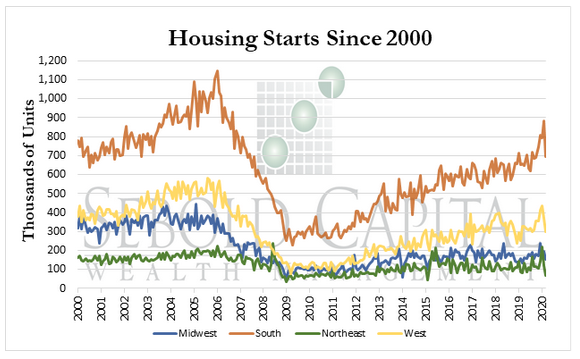 Housing starts track the number of new residential construction projects over a month. This indicator has implications for demand in construction spending/jobs, consumer wages, and complementary sectors such as durable household item sales. Along with building permits, housing starts is considered a leading economic indicator.
Housing starts track the number of new residential construction projects over a month. This indicator has implications for demand in construction spending/jobs, consumer wages, and complementary sectors such as durable household item sales. Along with building permits, housing starts is considered a leading economic indicator.
Housing starts fell by -22.25% in March 2020 to an annualized rate of 1.22 million, which increased only 1.42% relative to March 2019. This was below the market expectations of 1.30 million. Both Single-family sales and multi-family homes fell, respectively, by 17.5% to 0.856 million and 32.1% to 0.347 million.
The March reading fell below expectations, hitting one of the lowest rates since July of 2019. Housing starts have still not reached the same level that they were before 2006. Housing starts declined in every region of the U.S. The Northeast and the Midwest fell the most by -42.5% to 0.069 million and -21.5% to 0.153 million. The South and West also dropped -21.3% to 0.693 million and -18.2% to 0.301 million. These declines are likely due to consumer uncertainty about the current economic climate and a lack of demand due to the beginning effects of the coronavirus outbreak in the U.S. This data does not include the full impact of the coronavirus, which will be visible in the April report, where we expect these numbers to continue to fall.

April 17, 2020

